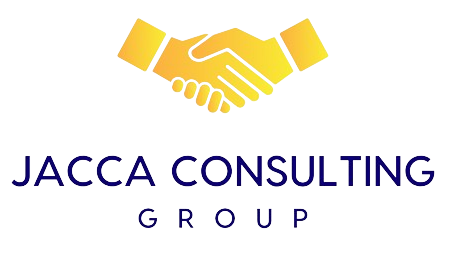In the fast-paced world of business, understanding the competitive environment is paramount for success. Competitive analysis serves as a foundational element for any organization aiming to thrive in its industry. By examining the strengths and weaknesses of rivals, businesses can identify opportunities for growth and areas where they may be vulnerable.
This process not only aids in strategic planning but also fosters a deeper understanding of market dynamics, allowing companies to position themselves effectively against competitors. Moreover, competitive analysis is not merely about observing what others are doing; it involves a comprehensive assessment of market trends, customer behaviors, and emerging technologies. By staying informed about competitors’ strategies, businesses can anticipate shifts in the market and adapt accordingly.
This proactive approach can lead to innovative solutions and improved customer satisfaction, ultimately driving profitability and long-term success. In essence, competitive analysis is a vital tool that empowers organizations to make informed decisions and maintain a competitive edge.
Table of Contents
ToggleKey Takeaways
- Competitive analysis is crucial for understanding market positioning and gaining a strategic advantage.
- Identifying competitors and their strengths helps pinpoint opportunities and threats.
- Analyzing market trends and customer preferences guides informed decision-making.
- Leveraging competitive intelligence tools enhances data collection and analysis accuracy.
- Continuously monitoring and adapting strategies ensures sustained business differentiation and performance.

Identifying Your Competitors and Their Strengths
The first step in conducting a thorough competitive analysis is identifying key competitors within the market. This process involves more than just recognizing direct rivals; it requires an understanding of indirect competitors who may not offer the same products or services but still vie for the same customer base. By mapping out the competitive landscape, businesses can gain insights into who they are up against and what strategies these competitors employ.
Once competitors are identified, the next phase involves analyzing their strengths. This can include examining their market share, brand reputation, customer loyalty, and unique selling propositions. For instance, a competitor may excel in customer service or have a strong online presence that attracts a significant audience.
By understanding these strengths, businesses can pinpoint areas where they may need to improve or differentiate themselves. This analysis not only highlights potential threats but also reveals opportunities for collaboration or innovation that can set a company apart in a crowded marketplace.
Analyzing Market Trends and Customer Preferences
Market trends play a crucial role in shaping business strategies. By analyzing these trends, organizations can gain valuable insights into consumer behavior and preferences. This involves studying various factors such as economic conditions, technological advancements, and cultural shifts that influence purchasing decisions.
For example, the rise of e-commerce has transformed how consumers shop, prompting businesses to adapt their strategies to meet changing demands. Understanding customer preferences is equally important. Conducting surveys, focus groups, and social media analysis can provide a wealth of information about what customers value most in products or services.
This data can inform product development, marketing strategies, and customer engagement efforts. By aligning offerings with customer expectations, businesses can foster loyalty and drive sales. Ultimately, staying attuned to market trends and consumer preferences allows organizations to remain relevant and responsive in an ever-evolving landscape.
Evaluating Your Own Strengths and Weaknesses
While analyzing competitors is essential, it is equally important for businesses to conduct an introspective evaluation of their own strengths and weaknesses. This self-assessment provides clarity on what sets a company apart from its rivals and where improvements are needed. Strengths may include a strong brand identity, innovative products, or exceptional customer service.
Recognizing these advantages allows businesses to leverage them effectively in their marketing efforts. Conversely, identifying weaknesses is crucial for growth. This could involve areas such as outdated technology, limited product offerings, or gaps in customer service.
Acknowledging these shortcomings enables organizations to develop targeted strategies for improvement.
By addressing weaknesses head-on, businesses can enhance their overall performance and better compete in the marketplace.
This dual focus on internal capabilities and external competition creates a balanced approach to strategic planning.
Utilizing Competitive Intelligence Tools and Resources
In today’s digital age, numerous tools and resources are available to assist businesses in gathering competitive intelligence. These tools range from analytics software that tracks competitor performance to social media monitoring platforms that provide insights into customer sentiment. Utilizing these resources can streamline the process of collecting data and analyzing trends, making it easier for organizations to stay informed about their competitive environment.
Additionally, industry reports and market research studies offer valuable information on market dynamics and competitor strategies. Subscribing to relevant publications or joining industry associations can provide access to exclusive insights that may not be readily available elsewhere. By leveraging these tools and resources, businesses can enhance their competitive analysis efforts and make data-driven decisions that support their strategic objectives.
Implementing Strategies to Differentiate Your Business
Once a comprehensive competitive analysis has been conducted, the next step involves implementing strategies that set a business apart from its competitors. Differentiation can take many forms, including unique product features, exceptional customer service, or innovative marketing campaigns. The key is to identify what resonates most with target customers and align offerings accordingly.
For instance, a company may choose to focus on sustainability as a differentiating factor by offering eco-friendly products or adopting environmentally responsible practices. Alternatively, investing in personalized customer experiences can create a strong emotional connection with consumers. By clearly communicating these differentiators through branding and marketing efforts, businesses can attract customers who value what they offer over competitors’ alternatives.
Monitoring and Adapting to Changes in the Competitive Landscape
The business environment is constantly evolving, making it essential for organizations to monitor changes in the competitive landscape regularly. This involves keeping an eye on emerging competitors, shifts in consumer preferences, and new market trends that could impact business operations. By staying vigilant, companies can quickly adapt their strategies to address potential threats or seize new opportunities.
Regularly revisiting competitive analysis allows businesses to refine their approaches based on real-time data. For example, if a competitor launches a successful marketing campaign or introduces an innovative product, it may prompt a reevaluation of existing strategies. Flexibility and responsiveness are critical in maintaining a competitive advantage in an ever-changing market.
Measuring the Impact of Your Competitive Analysis on Business Performance
Finally, measuring the impact of competitive analysis on business performance is vital for understanding its effectiveness. Key performance indicators (KPIs) such as sales growth, market share changes, and customer satisfaction ratings can provide insights into how well strategies are working. By tracking these metrics over time, organizations can assess whether their competitive analysis efforts are translating into tangible results.
Additionally, gathering feedback from customers can offer valuable perspectives on how well a business is meeting their needs compared to competitors. This feedback loop allows for continuous improvement and refinement of strategies based on real-world experiences. Ultimately, measuring the impact of competitive analysis not only validates the efforts invested but also informs future decision-making processes that drive sustained success in the marketplace.
To maintain a competitive edge in your industry, it’s essential to conduct thorough competitive analysis. This process not only helps you understand your rivals but also informs your strategic decisions. For further insights on how to effectively implement your strategies and stay ahead, you may find the article on Effective Strategy Implementation particularly useful. It provides valuable guidance on aligning your competitive analysis with your overall strategic goals.
FAQs
1. What is competitive analysis?
Competitive analysis is the process of identifying and evaluating your competitors’ strengths, weaknesses, strategies, and market positioning to gain insights that help improve your own business performance.
2. Why is competitive analysis important?
Competitive analysis helps businesses understand the market landscape, identify opportunities and threats, refine marketing strategies, improve product offerings, and stay ahead of rivals.
3. What are the key components of a competitive analysis?
Key components include identifying competitors, analyzing their products or services, pricing strategies, marketing tactics, customer base, strengths and weaknesses, and market share.
4. How often should competitive analysis be conducted?
Competitive analysis should be conducted regularly, such as quarterly or biannually, and also whenever there are significant market changes or new competitors enter the market.
5. What tools can be used for competitive analysis?
Common tools include SWOT analysis, Porter’s Five Forces, market research reports, competitor websites, social media monitoring tools, and analytics platforms like SEMrush or SimilarWeb.
6. How can competitive analysis help in product development?
By understanding competitors’ product features, customer feedback, and market gaps, businesses can innovate and improve their own products to better meet customer needs.
7. an competitive analysis improve marketing strategies?
Yes, it provides insights into competitors’ marketing tactics, target audiences, and messaging, enabling businesses to craft more effective and differentiated marketing campaigns.
8. Is competitive analysis only useful for large companies?
No, businesses of all sizes can benefit from competitive analysis to make informed decisions, optimize resources, and enhance their competitive position in the market.
9. What is the difference between competitive analysis and market research?
Competitive analysis focuses specifically on evaluating competitors, while market research encompasses a broader study of the overall market, including customer preferences, trends, and demand.
10. How can businesses act on the findings from competitive analysis?
Businesses can adjust pricing, improve product features, refine marketing messages, explore new market segments, and develop strategies to counter competitors’ strengths or exploit their weaknesses.





